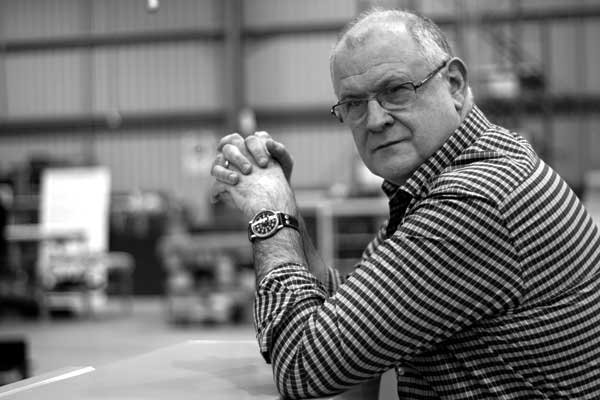How do designers find the right manufacturer? CEO of Australian furniture design and manufacture company, Planex, Jean-Pierre Jardel imparts his first-hand experience and wisdom on the topic.

September 10th, 2014
Planex, which has been operating since 1973, specialises in adaptive storage solutions. Their factory, located in outer Melbourne, is equipped with state-of-the-art sheet metal prototyping and production equipment, to manufacture custom designs with short lead times.
Operating within the evolving workplace market, Planex is quite clear in its goal, which is to manufacture end-user solutions that are enduring, versatile, elegant, resolved and original.
When it comes to working with designers, Jean-Pierre Jardel, CEO of Planex, offers Australian furniture designers some insight into how best to approach and work with the right manufacture.
So how do you go about finding the right manufacturer?
“By discovering the manufacturer that shares aligned values, vision and purpose,” Jardel says. “Also by knowing which manufacturers are responsive to end-user needs and receptive to the rapid introduction of proposed new products. And finally, by having an understanding of the manufacturer’s processes and materials.”
It’s critical, says Jardel, that manufacturer and designer share mutual respect for values and intellectual property, and operate on equal terms.
Collaboration, too, is essential and can reap rewards for both parties. “It’s a shared experience – the designer has a great design and the manufacturer provides the capability.
“Together we can provide local solutions that are a credible alternative to imported products; you too, can also ensure your design is manufactured authentically; and there’s satisfaction to be had in seeing products designed and manufactured that are specific to the end-users’ needs and budget.”
Flexibility is a critical consideration, because if your design is to be profitable it must meet manufacturing processes and be marketable. The design may also require minor changes so, Jardel says, be prepared!
He acknowledges that there are many challenges to manufacturing in Australia –we’re competing in a difficult market, there’s the threat of overseas-produced replicas, exorbitant distribution costs and a global marketplace without trade restrictions.
But there are also many great advantages to manufacturing on home soil: accessibility, short lead-times, ongoing quality control, reduced environmental impacts, continuity of supply, large colour range options and importantly, local support and maintenance to customers.
The manufacturer-designer relationship often comes down to a need for mutual survival: “we need you and you need us,” says Jardel. And, when approached with a collaborative mindset, it’s often a win-win partnership.
View Planex’s new Storage Guide, click here, and keep an eye out for the new specifier-friendly Planex website, set to launch in October 2014.
Jean-Pierre Jardel spoke as part of the Launch Pad mentoring workshop in Melbourne in July. Launch Pad finalists will be on show at CULT, 22 – 23 August as part of Melbourne Indesign, click here.
Launch Pad
launch-pad.com.au
Planex
planex.com.au
A searchable and comprehensive guide for specifying leading products and their suppliers
Keep up to date with the latest and greatest from our industry BFF's!

In the pursuit of an uplifting synergy between the inner world and the surrounding environment, internationally acclaimed Interior Architect and Designer Lorena Gaxiola transform the vibration of the auspicious number ‘8’ into mesmerising artistry alongside the Feltex design team, brought to you by GH Commercial.

Marylou Cafaro’s first trendjournal sparked a powerful, decades-long movement in joinery designs and finishes which eventually saw Australian design develop its independence and characteristic style. Now, polytec offers all-new insights into the future of Australian design.

Suitable for applications ranging from schools and retail outlets to computer rooms and X-ray suites, Palettone comes in two varieties and a choice of more than fifty colours.

Sub-Zero and Wolf’s prestigious Kitchen Design Contest (KDC) has celebrated the very best in kitchen innovation and aesthetics for three decades now. Recognising premier kitchen design professionals from around the globe, the KDC facilitates innovation, style and functionality that pushes boundaries.
Frasers Property Development announces approval of Central Park’s next residential stage.

In this comment piece republished from INDESIGN #88, Andrew Fong, studio lead at Allen Jack+Cottier Architects (AJC), discusses the ways in which museums are innovating in order to stay relevant.
The internet never sleeps! Here's the stuff you might have missed

A hospitality venue in the heart of Osaka comprising four dining options – a place where nostalgic pastimes meet high-end dining.

Savage Design’s approach to understanding the relationship between design concepts and user experience, particularly with metalwork, transcends traditional boundaries, blending timeless craftsmanship with digital innovation to create enduring elegance in objects, furnishings, and door furniture.